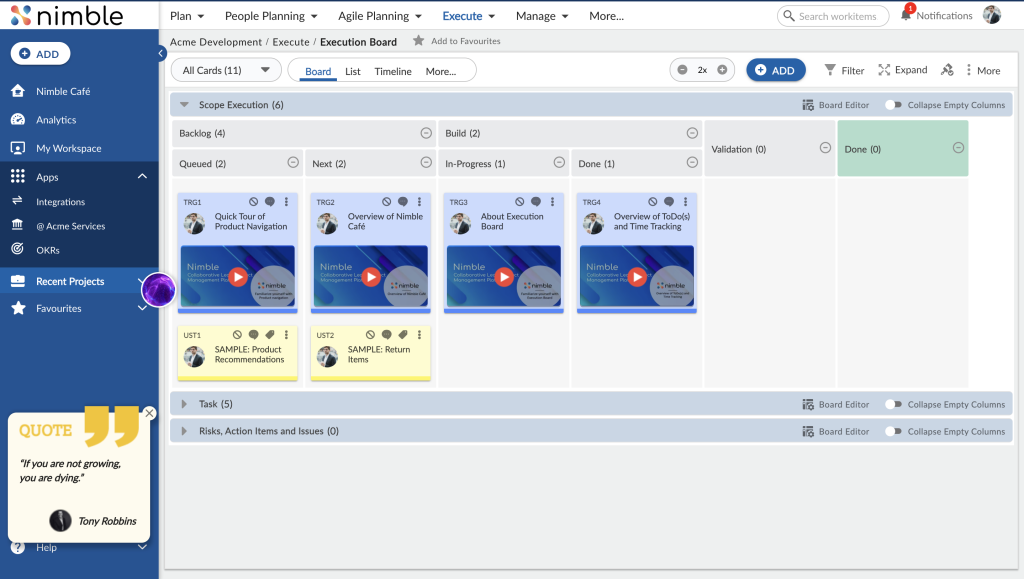Think back 10 years ago and the number of companies offering remote work looked very different to how it does today. Research shows that only 54% of employees in the USA work exclusively outside of the home, with 22% exclusively based in their home office and 22% working in a hybrid role with some time in the office and some at home.
That probably resembles the make up of your team. You’re most likely here because you are looking for tips on how work-at-home software solutions can help manage a virtual workforce. When you’ve got permanently remote and semi-remote team members, the right software makes a huge difference to productivity and team building.
Hybrid workers in particular need tools that enable them to switch between home and office locations, and possibly multiple devices, seamlessly. In this article, we’ll look at the challenges and benefits of remote software for homeworkers and how work from home team management software can benefit your organization.
5 Challenges and Benefits of Remote Team Software for Homeworkers
Remote team management does come with challenges, but if you are a new team leader or someone who has recently taken on responsibility for a virtual team, let us tell you that you can still create an environment for success. Your team doesn’t have to all be in the office at the same time to be productive and happy.
Here are the most common challenges we see affecting work-from-home team members and their colleagues, and what you can do about them.
Challenge #1: Keeping the team on track
One of the biggest challenges is making sure that the right work is happening at the right time. When you can’t swing by someone’s desk and do management by walking around, you have to rely on other ways to check-in.
Work-at-home software tools allow you to carry out virtual check-ins easily. Just drop someone a note and see how they are doing. You can also set up regular reminders in tools like Slack and Teams so you don’t forget to do the check-ins.

Nimble streamlines team task management, fostering collaboration and efficiency with intuitive features and seamless communication.
Shared task lists, common goals and visible, transparent OKRs all help keep the team on track as they will easily be able to find out what is expected of them.
Challenge #2: Communication
We also hear that communication is a huge problem for hybrid teams, because people in the office tend to hear things first. When you put people together, it’s natural that they will talk! Remote colleagues shouldn’t be left out of important announcements, but the reality is that they do miss out on small talk and the little confidences and updates shared in the communal kitchen while making a hot drink.

Set some parameters for the communication of important items so that everyone hears the same message at the same time.
For day-to-day comms, work-at-home tools let you communicate easily between office-based and remote workers. Online To-do lists and Kanban boards build out shared understanding of what needs to be done so colleagues can proactively communicate with each other to get the work done.
Challenge #3: Team building and building trust
One project manager told us that she works remotely most of the time, and it’s taking her a very long time to build up a reliable network of colleagues within the organization as she simply doesn’t have any occasion to meet and chat with them. In her last role, she quickly networked internally and built up professional working relationships, trust and credibility with colleagues. In her new hybrid role, it’s much harder to create that sense of team building.

This is a challenge for all teams where members are not together for much of the time. Choose tools that allow you to send kudos to others, and make the time to do it. Trust can be built through the actions of others, and celebrating and calling out those who have done a good job can help elevate levels of trust within the team. Even if someone didn’t see the activity happen, having a reliable source (you as the team leader or colleague who did see it) report it to them is the next best thing.
Challenge #4: Keeping Momentum
Washing piling up at home? Too much going on with the kids? It can be hard for work-from-home colleagues to keep momentum. We’re not saying that your colleagues are easily distracted, but there are certainly different distractions at home than in the office!
The impact of losing momentum plays out in processes not being followed, people forgetting standard steps and needing more help to complete tasks.

Use workflows and automation to ensure processes are followed in a standard way. Visualize work to see the bottlenecks so that they can be removed, sharing that information with the team so you can all work on improvements together.
Challenge #5: Getting feedback
In-person teams collect feedback intuitively all the time. It’s in the way someone nods their head in a meeting, or a glance at the boss across the room to get permission to take action. It’s in the tone of voice and who you ask for certain things.
When people are remote, that kind of daily feedback can be hard, if not impossible. What did the sender mean by phrasing their email request using those words? It’s just as likely that we will interpret actions incorrectly by virtue of missing out key information like body language.

Beyond putting your cameras on, it can be hard to improve the way that informal feedback is collected in the team. However, team management software tools include templates for making the process a bit more formal. Use retrospectives and feedback templates to capture potential improvements and listen to the team, building morale and improving processes.
People are more inclined to give feedback if they see that past feedback was acted on, so make sure that any changes made are fed back in a “you said, we did” format.
In summary
Work-at-home solutions make it easier to manage remote teams and keep work on track with a diverse workforce. Support home workers with the right tools and you’ll find it much easier to address the challenges above.
Remember, make sure you are addressing the right problems with any interventions that are put in place. Tools can only go so far as to remove the challenges. You also have to have trusted, strong leadership in place and a culture of respect and empowerment.






